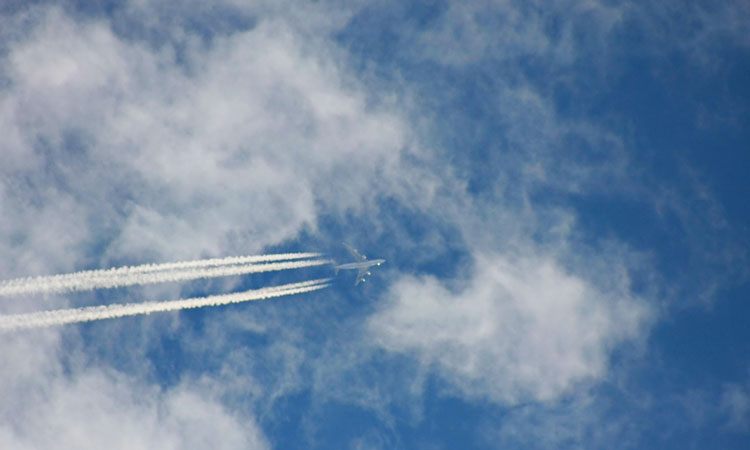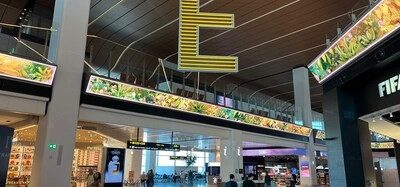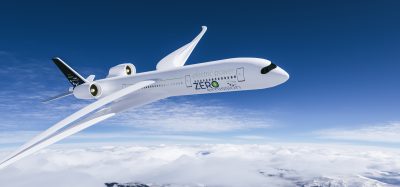Large-scale incentives needed to increase SAF production
- Like
- Digg
- Del
- Tumblr
- VKontakte
- Buffer
- Love This
- Odnoklassniki
- Meneame
- Blogger
- Amazon
- Yahoo Mail
- Gmail
- AOL
- Newsvine
- HackerNews
- Evernote
- MySpace
- Mail.ru
- Viadeo
- Line
- Comments
- Yummly
- SMS
- Viber
- Telegram
- Subscribe
- Skype
- Facebook Messenger
- Kakao
- LiveJournal
- Yammer
- Edgar
- Fintel
- Mix
- Instapaper
- Copy Link
Posted: 22 June 2022 | International Airport Review | No comments yet
The International Air Transport Association has urged governments to put in place large-scale incentives to rapidly expand the use of sustainable aviation fuels.


The International Air Transport Association (IATA) called for governments to urgently put in place large-scale incentives to rapidly expand the use of sustainable aviation fuels (SAF) as aviation pursues its commitment to achieving net zero carbon emissions by 2050.
To fulfil aviation’s net zero commitment, current estimates are for SAF to account for 65 per cent of aviation’s carbon mitigation in 2050. That would require an annual production capacity of 449 billion L. Investments are in place to expand SAF annual production from the current 125 million L to five billion by 2025. With effective government incentives, production could reach 30 billion L by 2030, which would be a tipping point for SAF production and utilisation.
“Governments don’t need to invent a playbook. Incentives to transition electricity production to renewable sources like solar or wind worked. As a result, clean energy solutions are now cheap and widely available. With similar incentives for SAF, we could see 30 billion L available by 2030. Though still far from where we need to be, it would be a clear tipping point towards our net zero ambition of ample SAF quantities at affordable prices,” said Willie Walsh, IATA’s Director General at the 78th IATA Annual General Meeting in Doha, Qatar.
In 2021, irrespective of price (SAF is between two and four times the price of conventional jet fuel), airlines have purchased every drop of the 125 million L of SAF that was available. And already more than 38 countries have SAF-specific policies that clear the way for the market to develop. Taking their cue from these policy measures, airlines have entered into $17 billion of forward-purchasing agreements for SAF.
Incentives to ramp-up production
Further investment in production needs support from the right policies. This would boost supply and drive down costs.
TAKE A READ:
Scottish and UK governments urged to support Green Freeport
Pittsburgh Airport’s new strategy to reduce aviation emissions
Sustainable taxiing at Amsterdam Airport Schiphol by Wilma van Dijk (Schiphol Amsterdam Airport)
Electricity production through solar or wind power faced similar hurdles as these technologies replaced fossil fuels. With effective policy incentives, both are now affordable and widely available.
By applying similar incentive-based policies to SAF, governments can support global SAF production to reach 30 billion L by the end of the decade. This would be a tipping point as it would send a clear signal to the market that SAF is playing its intended long-term role in aviation’s decarbonisation and encourage investments to drive up production and drive down the price.
The market for SAF needs stimulation on the production side. The U.S. is setting an example for others to follow. Its SAF production is expected to reach 11 billion L in 2030 on the back of heavy government incentives.
Europe, on the other hand, is the example not to follow. Under its Fit for 55 initiative, the EU is planning to mandate that airlines uplift five per cent SAF at every European airport by 2030. Decentralising production will delay the development of economies of scale. And forcing the land transport of SAF will reduce the environmental benefit of using SAF.
Other propulsion technologies
Hydrogen and electrically powered aircraft are part of aviation’s plan to achieve net zero emissions by 2050, but they are likely to be limited to short-haul routes. SAF is the proven solution for long-haul flying.
“Hydrogen and/or electric propulsion systems will most likely be available for short haul commercial flights by 2035, but the majority of emissions come from long-haul widebody flights and to tackle these emissions, SAF is the only proven solution. We know it works, and we need to double down our efforts to get all actors of the industry on board, including governments, to increase production, availability, and uptake” said Sebastian Mikosz, IATA’s Senior Vice President for Environment and Sustainability.
Net Zero and long term aspirational goal
In October 2021, IATA member airlines came together and took the monumental decision to commit to achieving net zero emissions by 2050. This commitment brings the industry in line with the Paris Agreement’s 1.5°C goal. Climate change is the greatest threat facing our societies and achieving net zero emissions will be a huge challenge as the expected scale of the industry in 2050 will require the mitigation of 1.8 gigatons of carbon.
To provide the right set of consistent policies and long-term stability needed for investments, the aviation industry is calling on all governments to support the adoption of a long term climate goal for air transport at the 41st Assembly of the International Civil Aviation Organization (ICAO) this September, aligned with industry commitments. This climate goal is critical to back up the industry’s decarbonisation ambitions and would provide a global multilateral framework for action without distorting competition.
Related topics
Airside operations, Emissions, Funding and finance, New technologies, Sustainability, Sustainable Aviation Fuel (SAF), Sustainable development
Related organisations
International Air Transport Association (IATA), International Civil Aviation Organization (ICAO)


















